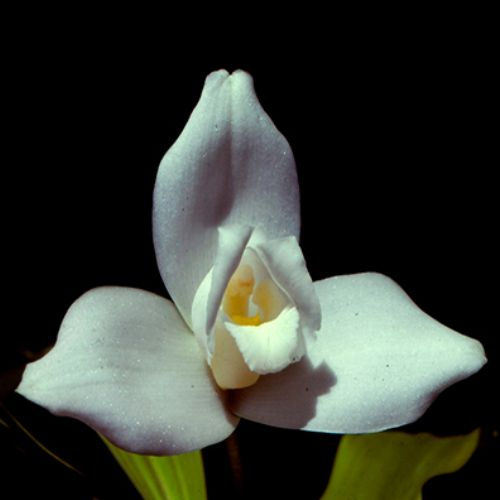Learning about the national flower of Guatemala, the Monja Blanca
- Jimena Gonzalez

- Oct 20, 2024
- 2 min read
When you think of Guatemala, you think of the quetzal, the sound of the marimba and the coat of arms on the country's flag, all of which are important symbols of the Central American country.
However, Guatemala has a symbol that not only highlights the country's cultural patrimony, but also represents Guatemala's biodiversity.
The national flower of Guatemala is known as the Monja Blanca (translated to "white nun" in English). The origins of the name "Monja Blanca" goes back to pre-Hispanic times. The flower was utilized by the Mayas for their rituals and was considered a sacred plant.
Before the arrival of Spanish colonizers, the flower was known as Saqi ixq, which translates to "white woman" in Q'eqchi' (an indigenous Maya language). To this day, Mayan communities continue to refer to this orchid by it this indigenous name.
In addition, the name derives from the flower's resemblance of a nun in a praying position. This is in reference to the stamen (the flower's male reproductive parts) and the pistils (the flower's female reproductive parts) joined together, resembling the aforementioned shape. When the Spanish colonizers arrived, the name was changed to "Monja Blanca."
Today, the Monja Blanca is imprinted on Guatemala's 50 cent coin.
Its scientific name is Lycaste skinneri or Lycaste virginalis and is a species of orchid that grows in specific regions of Central America, which includes southern Mexico, Guatemala, El Salvador and Honduras, at an altitude of approximately 1650 meters above sea level.
The Monja Blanca is an epiphyte, meaning it grows on other plants merely for physical support and without hurting the growth of the other plant. This allows the orchid to grow in harmony with the other plant.
The flower typically blooms between October and February, with the flower remaining for four to six weeks.
The journey to the Monja Blanca becoming Guatemala's national flower began in 1933, when Leticia Southerland, the American president of the International Flower Show, sent a thank you letter to Guatemalan president Jorge Ubico. She thanked him for a donation of Guatemalan orchids that were exhibited at the show for the first time.
Because Guatemala did not have an official floral emblem at the time, Southerland suggested the Lycaste virginalis orchid, or the white nun orchid. In 1934, Ubico formally declared this orchid as the national flower of Guatemala.
All in all, the Monja Blanca has come to symbolize the peace, beauty and purity of Guatemala.






Comments